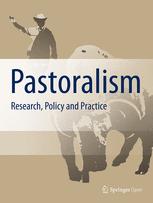Resource information
The adoption and adaptation of enclosures in the arid and semi-arid rangelands of sub-Saharan Africa is driven and sustained by a combination of factors. However, reviews indicate that these factors cannot be generalized, as they tend to be case specific. A study was therefore conducted to explore the history and reasons for enclosure establishment in Chepareria, a formerly degraded communal rangeland in north-western Kenya. While Vi-Agroforestry Organization accounting for 52.5 % was the main source of knowledge on enclosure establishment; it has now emerged that rangeland enclosures among the Pokot pastoral community existed prior to land management interventions by Vi- Agroforestry. Results indicated that there are three categories of enclosures which were established for boundary demarcation, provide grazing reserves, enable proper land management, facilitate crop cultivation in a pastoral setup and to curb land degradation. The role of self-trigger [accounting for most of the spontaneous enclosures (73.5 %)] indicates the continued establishment and expansion of areas under enclosure management as private land ownership accounting for 51.7 % of enclosure tenure continues to gain momentum in Chepareria. While rangeland enclosures in Chepareria were mainly established for boundary demarcation, to alleviate pasture scarcity and enable proper management of formerly degraded areas; they have facilitated land restoration and rehabilitation by increasing flexibility in land, fodder and livestock management amongst agro-pastoralists in Chepareria over the last three decades. To ensure that rehabilitated areas do not revert to their previously degraded state; technical interventions are needed to allow for a more intensive use of rangeland resources within enclosed areas.


